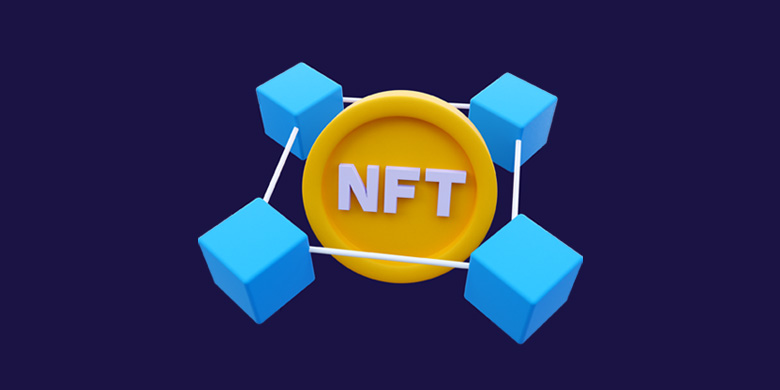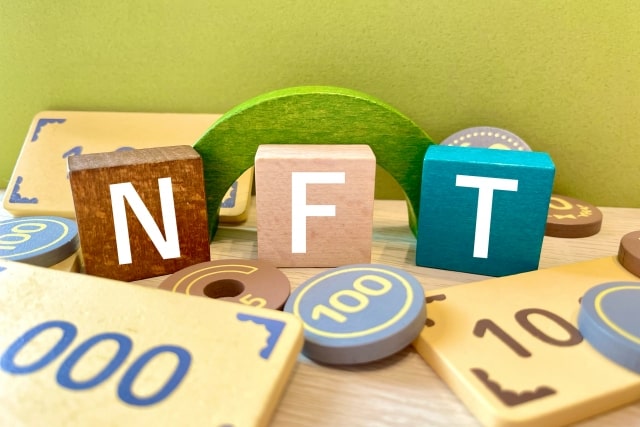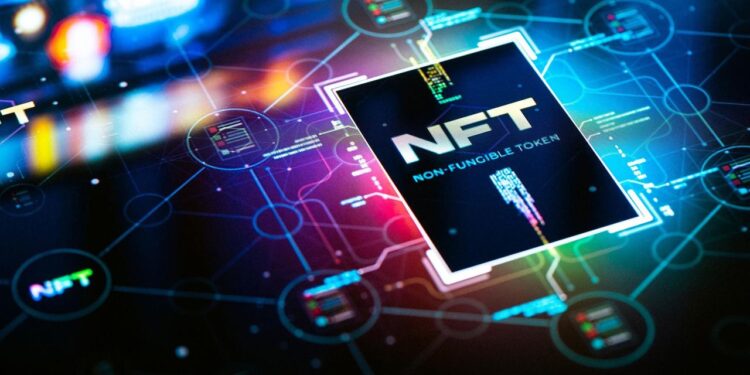The digital realm is witnessing an unprecedented transformation in ownership and value, largely propelled by the emergence of Non-Fungible Tokens (NFTs). What began as a nascent concept in the fringes of cryptocurrency has rapidly evolved into a vibrant NFT market, fundamentally redefining the landscapes of art, collectibles, and an ever-expanding array of digital assets. Far more than just fleeting digital fads, NFTs represent a revolutionary application of blockchain technology, enabling verifiable scarcity and unique ownership in the digital world. Understanding this seismic shift – its underlying technology, its economic implications, and its profound cultural impact – is crucial for anyone navigating the frontiers of digital commerce, creative expression, and intellectual property in the 21st century.
The Genesis of Digital Scarcity

For decades, the internet has been characterized by abundant, easily reproducible digital content. A JPEG image could be endlessly copied, a song freely downloaded, a video endlessly shared. This inherent replicability made true digital ownership, akin to owning a physical painting or a rare stamp, a seemingly impossible concept. NFTs, built on the immutable ledger of blockchain, shattered this paradigm.
A. Understanding Non-Fungibility
The core of an NFT lies in its “non-fungible” nature. To fully grasp this, it’s essential to differentiate between fungible and non-fungible assets:
- Fungible Assets: These are interchangeable units, where one unit is identical to another. Think of a dollar bill – one $10 bill is exactly the same as any other $10 bill. Cryptocurrencies like Bitcoin or Ethereum are also fungible; one Bitcoin is indistinguishable from another.
- Non-Fungible Assets: These are unique, distinct, and cannot be replaced by another identical item. A specific painting (e.g., the Mona Lisa), a unique vintage car, or a signed baseball card are all non-fungible. Each possesses unique characteristics or a specific provenance that makes it one-of-a-kind.
An NFT, therefore, is a unique digital identifier recorded on a blockchain, proving ownership of a specific digital (or sometimes physical) asset. It’s not the asset itself, but rather a verifiable certificate of authenticity and ownership tied to that asset.
B. The Underlying Blockchain Technology
The magic of NFTs is entirely dependent on blockchain, the decentralized, distributed ledger technology that underpins cryptocurrencies.
- Decentralized Ledger: Unlike traditional databases controlled by a single entity, a blockchain is maintained by a network of computers. This decentralization makes it incredibly secure and resistant to tampering.
- Immutability: Once a transaction (like the minting or transfer of an NFT) is recorded on the blockchain, it cannot be altered or deleted. This immutability provides a permanent, verifiable record of ownership and transaction history.
- Smart Contracts: NFTs are typically created and managed using “smart contracts” – self-executing contracts with the terms of the agreement directly written into lines of code. These contracts automate the creation (minting), transfer, and royalty payments associated with NFTs. Most NFTs currently reside on the Ethereum blockchain, leveraging its robust smart contract capabilities, though other blockchains like Solana, Polygon, and Flow are also gaining traction.
- Transparency: Every transaction involving an NFT, from its creation to its successive sales, is publicly recorded and verifiable on the blockchain. This transparency allows anyone to trace the provenance and ownership history of an NFT.
C. The Minting Process
Creating an NFT, known as “minting,” is the process by which a digital file (like an image, video, or audio clip) is converted into a unique digital asset on the blockchain.
- Digital Asset Preparation: An artist or creator designs or selects the digital file they wish to tokenize.
- Choosing a Blockchain and Platform: The creator selects a blockchain (e.g., Ethereum, Polygon) and an NFT marketplace (e.g., OpenSea, Rarible, Foundation) that supports that blockchain.
- Wallet Connection: The creator connects their cryptocurrency wallet to the chosen marketplace. This wallet holds the cryptocurrency needed to pay for gas fees (transaction costs) and will receive the NFT upon creation.
- Uploading and Defining Metadata: The digital file is uploaded, and metadata (information about the NFT, such as its name, description, properties, and a link to the original file) is attached. This metadata is crucial as it defines the unique characteristics of the NFT.
- Gas Fee Payment: The creator pays a “gas fee,” which is the computational cost required to process the transaction and record the NFT on the blockchain. This fee fluctuates based on network congestion.
- Smart Contract Execution: Once the fee is paid, the smart contract is executed, creating the unique token and recording its ownership on the blockchain. The NFT is now “minted” and exists as a verifiable digital asset.
- Listing for Sale: The creator can then list the NFT for sale on the marketplace, often at a fixed price, via auction, or through a bonding curve mechanism.
Reshaping Art and Collectibles
The NFT market has most visibly disrupted the worlds of art and collectibles, offering unprecedented opportunities for creators and new avenues for investors and enthusiasts.
A. The Revolution in Digital Art
NFTs have fundamentally changed the way digital art is valued, owned, and traded, empowering digital artists in ways previously unimaginable.
- Verifiable Scarcity and Ownership: For the first time, digital artists can prove true scarcity and authenticate ownership of their works, overcoming the “right-click-save-as” problem. This enables digital art to be valued and sold like physical masterpieces.
- Direct Monetization for Artists: NFTs allow artists to sell directly to collectors, bypassing traditional galleries and intermediaries. This means artists retain a larger share of the sales and have greater control over their work.
- Perpetual Royalties: A groundbreaking feature of many NFT smart contracts is the ability to program in “creator royalties.” This means the original artist can automatically receive a percentage of all future secondary sales of their NFT, providing a continuous income stream that traditional art sales rarely offer.
- New Art Forms and Experiences: NFTs are pushing the boundaries of art, enabling new forms like generative art (where algorithms create unique pieces), interactive art, and programmable art that evolves over time. They also facilitate the tokenization of music, videos, and even virtual real estate.
- Community and Patronage: NFTs foster direct connections between artists and their collectors. Many artists build vibrant communities around their NFT collections, offering exclusive access, future drops, or unique experiences to their holders. This creates a new form of digital patronage.
B. The Evolution of Digital Collectibles
Beyond unique art pieces, NFTs have breathed new life into the world of collectibles, creating entirely new categories of digital scarcity.
- Profile Picture (PFP) Projects: Collections like CryptoPunks and Bored Ape Yacht Club (BAYC) have become cultural phenomena. These projects consist of a limited number of unique cartoon-like characters, each represented by an NFT. Owning a PFP NFT often grants membership to an exclusive community, conferring social status and access to perks in the metaverse.
- Gaming Assets: NFTs are increasingly used to represent in-game items (e.g., unique weapons, skins, characters) that players can truly own, trade, and even transfer between different games (if interoperable). This gives players real ownership over their digital assets, distinct from traditional game items locked within a single game’s ecosystem.
- Sports Memorabilia and Trading Cards: Digital trading cards and moments (e.g., NBA Top Shot) allow fans to collect unique, officially licensed digital highlights or player cards, bringing the thrill of physical collecting into the digital sphere.
- Virtual Land and Real Estate: NFTs represent ownership of parcels of virtual land in metaverse platforms like Decentraland and The Sandbox. This virtual real estate can be developed, leased, or sold, creating a new speculative market for digital property.
- Music and Media NFTs: Musicians are tokenizing songs, albums, and even concert tickets as NFTs, offering exclusive content, fan experiences, and new revenue streams, bypassing traditional record labels.
The Economic and Social Dynamics of the NFT Market

The NFT market is a dynamic ecosystem driven by a unique blend of technology, speculation, community, and cultural relevance.
A. Marketplaces and Trading
The NFT ecosystem relies heavily on specialized online marketplaces where NFTs can be bought, sold, and traded.
- Primary Sales (Minting): NFTs are initially offered by creators, often through a “drop” or “minting event,” where buyers pay a fixed price or participate in an auction.
- Secondary Marketplaces: Platforms like OpenSea, Rarible, and Magic Eden facilitate the resale of NFTs between collectors. The vast majority of trading volume occurs on these secondary markets.
- Pricing and Valuation: NFT prices are highly speculative and volatile, influenced by factors such as:A. Scarcity and Rarity: The total supply of a collection and the rarity of specific traits within that collection.B. Utility: Any inherent benefits or perks associated with owning the NFT (e.g., access to exclusive communities, events, or future drops).
C. Community Strength: The size, engagement, and enthusiasm of the project’s online community.
D. Artist/Creator Reputation: The standing and track record of the artist or development team behind the NFT.
E. Market Hype and Speculation: Often driven by social media trends and FOMO (Fear Of Missing Out).
F. Floor Price: The lowest price for an NFT within a specific collection, often used as a quick indicator of a collection’s perceived value.
- Liquidity Challenges: While some NFTs achieve high valuations, many are illiquid, meaning they are difficult to sell quickly without a significant price drop.
B. Community and Identity
NFTs are increasingly intertwined with social identity and the formation of exclusive online communities.
- Exclusive Memberships: Owning certain NFTs, especially PFP projects, often grants access to private Discord servers, exclusive events, or early access to future projects. This creates a sense of belonging and elite status.
- Status Symbols: High-value NFTs function as digital status symbols, similar to luxury goods in the physical world, signaling wealth, taste, or early adoption within Web3 circles.
- Fostering Collaboration: NFT communities can become incubators for collaboration, with holders brainstorming ideas, contributing to project development, and collectively marketing their chosen collection.
- Decentralized Autonomous Organizations (DAOs): Some NFT projects are evolving into DAOs, where NFT holders have voting rights on the future direction and treasury management of the project, fostering a new model of decentralized governance.
Long-Term Implications and Future Trends
While the NFT market has experienced periods of intense hype and subsequent cooling, its underlying technology and core principles hold significant long-term implications for various industries and the broader digital economy.
A. Legal and Regulatory Landscape
The rapid growth of NFTs has outpaced regulatory clarity, leading to an evolving legal landscape.
- Ownership and Intellectual Property: The debate continues over what exactly an NFT holder owns. Does it confer copyright, commercial rights, or merely the token itself? Clearer legal frameworks are needed to define intellectual property rights for NFTs.
- Securities Classification: Regulators worldwide are grappling with whether certain NFTs, particularly those linked to revenue-sharing or speculative investment, should be classified as securities, subjecting them to stricter financial regulations.
- Anti-Money Laundering (AML) and KYC: The pseudonymous nature of crypto transactions raises concerns about money laundering. Regulators are pushing for Know Your Customer (KYC) requirements on NFT marketplaces.
- Taxation: The tax implications of buying, selling, and creating NFTs are complex and vary by jurisdiction, requiring clearer guidance for participants.
B. Environmental Concerns
The energy consumption associated with certain blockchains (particularly Ethereum’s previous Proof-of-Work mechanism) for minting and transacting NFTs raised significant environmental concerns.
- Proof-of-Stake Transition: Ethereum’s “Merge” to a Proof-of-Stake consensus mechanism significantly reduced its energy consumption, addressing a major criticism. Other blockchains are inherently more energy-efficient.
- Sustainable NFTs: The industry is increasingly focused on developing “green” NFTs on energy-efficient blockchains and exploring carbon offsetting initiatives.
C. Future Applications and Utility
The potential applications of NFTs extend far beyond art and collectibles, promising to reshape various sectors.
- Ticketing: NFTs could revolutionize event ticketing by preventing counterfeiting, enabling verifiable resale markets, and offering exclusive perks to original ticket holders.
- Identity and Credentials: NFTs could serve as verifiable digital identities, academic degrees, professional certifications, or medical records, giving individuals greater control over their personal data.
- Real Estate and Asset Tokenization: Fractional ownership of real-world assets (e.g., property, luxury goods) could be represented by NFTs, making illiquid assets more accessible for investment.
- Supply Chain Management: NFTs could track the provenance of goods, ensuring authenticity and transparency in supply chains, combating counterfeiting.
- Decentralized Finance (DeFi) Integration: NFTs are increasingly being used as collateral for loans in DeFi protocols, unlocking liquidity for digital assets.
- Metaverse Interoperability: As the metaverse develops, NFTs are envisioned as the key to interoperability, allowing digital assets (e.g., avatars, clothing, virtual land) to seamlessly move between different virtual worlds. This is a crucial step towards a truly open metaverse economy.
Maturation and Mainstream Adoption
The NFT market is still in its early stages of development, characterized by volatility, innovation, and ongoing experimentation. Its journey towards mainstream adoption will depend on addressing current challenges and demonstrating clear, long-term utility beyond speculative value.
- User Experience Improvement: NFT marketplaces and wallet interfaces need to become more user-friendly and intuitive to onboard a broader audience, abstracting away some of the technical complexities of blockchain.
- Increased Utility and Interoperability: For NFTs to achieve lasting value, they need to offer more than just ownership. Their utility—whether in gaming, metaverse experiences, exclusive access, or real-world benefits—will drive adoption. Interoperability across different platforms and blockchains is also key.
- Regulatory Clarity: Clear and consistent regulatory frameworks will provide stability, foster trust among institutional investors, and protect consumers.
- Education and Awareness: Educating the public about the technology, benefits, risks, and responsible use of NFTs is crucial for dispelling misinformation and fostering informed participation.
- Focus on Creators: Sustained growth of the NFT market depends on empowering creators – artists, musicians, game developers, and innovators – with tools that protect their rights, ensure fair compensation, and foster genuine connection with their audiences.
Conclusion
The NFT market, spanning art, collectibles, and beyond, represents a profound shift in our understanding of digital ownership and value. Built on the revolutionary foundation of blockchain technology, NFTs have created verifiable scarcity in a world of digital abundance, empowering creators, fostering vibrant communities, and unlocking new economic paradigms. While the journey ahead is complex, fraught with challenges related to regulation, environmental impact, and market maturity, the underlying principles of verifiable digital ownership, fractionalization, and programmable royalties are transformative.
As the digital frontier continues to expand into the metaverse and beyond, NFTs are poised to play an increasingly central role, acting as the fundamental building blocks of a truly decentralized, owner-driven digital economy. They are not merely digital curiosities; they are harbingers of a new era, fundamentally reshaping how we create, own, and interact with value in our ever-evolving digital realities. The canvas for this digital future is vast, and NFTs are the brushstrokes defining its contours.





Discussion about this post